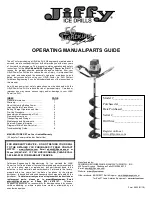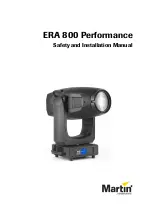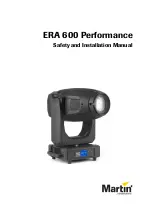
Operation: Cutting
AM24480,000006E -19-05JUL19-1/1
T7M7G6M,00004B1 -19-17JUN20-1/1
T7M7G6M,00004B2 -19-15JUN20-1/1
General
1. Smaller trees requiring only a single cut may need the
harvester head unlatching to be over-ridden, with the
tilt-up button pushed while cutting. This is because the
tree is forced faster than the saw chain can cut. Once
the tree is cut, the harvester head down button can be
activated to fell the tree.
2. Trees with a heavy forward lean can be felled either by
uprooting, or by placing multiple front cuts, to create a
larger area to compress while back cutting.
3. Larger trees should be released once the tree is falling.
This will reduce the occurrence of any harvester head
damage.
4. Tops of hills and uneven ground can also cause trees
to swing up, damage the harvester head or causing
the carrier to lift.
5. Releasing trees as they are falling into another
standing tree can sometimes allow the tree to roll off.
6. If the fallen tree is hung in another, be careful when
pulling it down. Watch to ensure the holding tree is not
being pulled in the same direction. If so, pushing the
tree can uproot the tree away from the carrier.
Using the Main Saw Unit
Prior to using the saw unit keep in mind the following:
1. If possible, view the saw bar.
2. The harvester head will fall over when the saw chain
is activated.
3. Protect boom hydraulics and the cab.
4. Position the tree for delimbing.
5. While cutting, push in the required felling direction,
remembering to avoid upward pressure.
6. As the cutting unit completes the cut, the saw chain
will increase in speed, and bark chips may be visible.
7. Once the cut is completed, stop activating the saw
chain button; the saw bar will automatically return.
8. When felling, it is possible to jam the saw bar. If
so, stop the activation of the saw chain and slowly
lift the harvester head. The weight of the tree has
pressurized the oil in the lift rams of the carrier; the
lifting distance should not be great.
9. Check the saw bar has returned by the saw home
sensor before moving the tree too far.
10. Ensure the log is clamped before the saw chain is
activated. A loose log may move after the saw chain
begins the cut, which may derail the saw chain or stop
the saw chain from cutting.
11. A side tear along the tree may stop the saw bar from
returning if it is not cut on the downward pass. The
saw chain cut should be made past this tear.
12. Logs should be supported when cutting, as this will
avoid log split.
13. A small amount of upward lift may be required as the
saw chain completes the cut. This will keep the cut
open and reduce the likelihood of the saw stalling.
14. Ensure the end of the saw bar does not cut into the
ground when completing a cut. The saw chain may
also cut into another log, damaging the value of that
log, or, if the harvester head is moving, damage the
saw bar and chain.
15. When the saw chain is jammed out or the diameter
detect is activated, the feed motors are isolated. If
the stem needs to be moved in this position, you can
do so by activating key F1 along with saw and feed
reverse. Care should be taken when jamming the saw
bar as it is easy to damage.
Using the Top Saw Unit
1. The top saw is designed for cutting small diameter
tops off trees. The tip of the saw bar can be pinched
if larger diameters are attempted.
2. The top saw chain can be derailed by branches or if
the end of the log is loaded. It is advised that the top
saw bar remains visible when cutting.
2-5-1
090721
PN=38
Содержание HTH618C
Страница 2: ......
Страница 91: ...Index Index 3 090721 PN 91 ...
Страница 92: ...Index Index 4 090721 PN 92 ...
















































